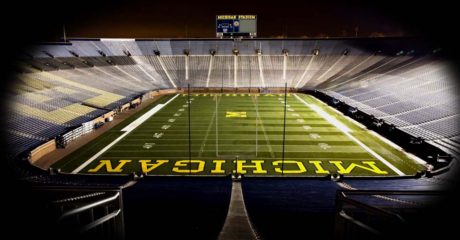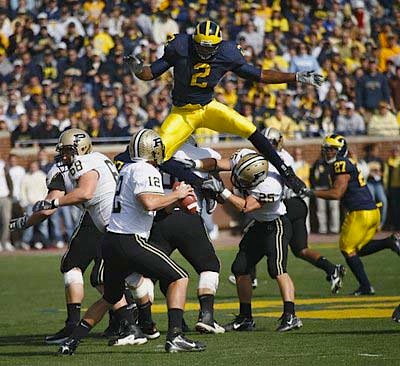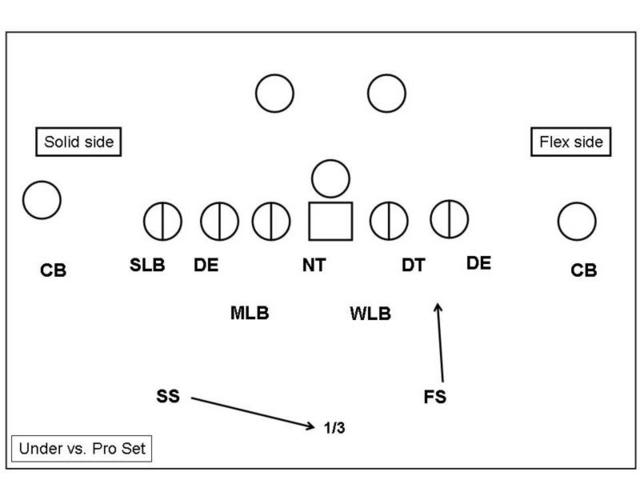Mailbag: How ’bout them linebacker recruits?
 |
| Joe Bolden (#27) helps tackle Wes Brown in Thursday’s Under Armour All-America Game (image via Cincinnati.com) |
Magnus –
This week there has been a lot of buzz about how well Joe Bolden is playing. Of the four incoming linebackers (all of which you list on your site as inside linebackers) I’m wondering how you see them fitting into the scheme and depth chart. More specifically: Demens is a solid multi-year starter who will anchor the middle next year and be replaced by someone the following year – who do you think is the best fit? Morgan is limited athletically but as a freshman proved to be a quality contributor and should only get better – do you see any of the freshmen threatening his starting spot next year or beyond that? Do you see any of these recruits changing positions to DE or OLB? Has Bolden’s performance this week changed your rating of him?
Also, could you maybe talk about the differences in physical traits that you’d want between the Will and Mike positions? My understanding is that the 4-3 under is pretty similar to a 3-4 defense and that both the MIKE and WILL are essentially classic middle linebackers. Is that true?
Adam Gurnee, IL
Thanks for the question, Adam. I list all four incoming linebackers as “inside linebackers” because in the 4-3 Under, there are two inside linebackers and one outside linebacker. Against a base offense, both the WILL and MIKE playing between the tackles and are mostly interchangeable. They essentially have the same responsibility against the run, although obviously offensive formations and plays change things a little bit. If Michigan ran a 4-3 Over or a Tampa Two defense, then I would consider the WILL an outside linebacker and the MIKE an inside ‘backer. For further schematic explation, check out this post from last spring.
Both Joe Bolden and Royce Jenkins-Stone have been recruited to play MIKE. James Ross and Kaleb Ringer have been recruited to play WILL.
I believe the best fit to replace Demens in a couple years is Desmond Morgan. Morgan is already 220-225 lbs. and a good height (in other words, not too tall) to take on lead blocks from fullbacks. Brady Hoke clearly values experience (why else would Troy Woolfolk start for the entire season?), and I think that will give Morgan the upper hand in the fight for the middle linebacker job, even if a guy like Joe Bolden is hot on his heels. I also think Morgan lacks the necessary athleticism to start at WILL for the next three years, because he’s too slow to cover running backs and slot receivers in space. He’s a short-term plug at WILL, not a long-term answer, in my opinion.
I do not think Morgan’s starting spot at WILL is etched in stone for next season. He had a solid year but not a great one, and as I said above, his skill set isn’t perfect for the position. If incoming freshman James Ross can add just a little bit of weight, I think he has a decent shot at unseating Desmond Morgan or at least getting some snaps as a backup. Ross diagnoses plays as quickly as I have ever seen a high schooler, and that’s a key component of playing WILL in this defense. The weakside ‘backer is often unblocked or targeted on play action passes, so it’s very important that he’s an intelligent player. I think that’s why Morgan found time there as a freshman, and I think that’s why Ross has a shot there, too.
I do not foresee any of these linebackers playing defensive end, but there is a possibility that Jenkins-Stone could turn into a SAM. He’s a tall, lean guy and if he can get in the weight room and pack on some pounds, then he could be an attacker in the mold of Jake Ryan. However, depth is needed at middle linebacker, so my guess is that he stays there, at least for a couple seasons. Bolden is a talented kid but has less position flexibility, so if Jenkins-Stone presses for playing time, then I could see him playing SAM to get all the talent spread out among the three linebacker positions.




